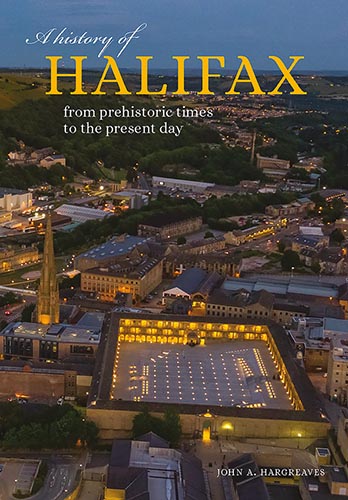Dr John A Hargreaves
Visiting research fellow
Dr Hargreaves has also written about Halfax's musical and social history in 'Every valley shall be exalted: A history of the Halifax Choral Society 1818 - 2018'
The colourful history of Halifax has been revisited in a new edition of a well-regarded book about the town written by a University of Huddersfield academic.
Dr John A Hargreaves’ A History of Halifax was first published in 1999 but a new edition – the book’s third – brings the story of Huddersfield’s neighbour up to date.
Awarded his PhD at the University, Dr Hargreaves is a Visiting Research Fellow at the institution and is also the long-standing editor of the Transactions of the Halifax Antiquarian Society.
His book offers a definitive and comprehensive history of the town, fully illustrated and now comprehensively updated.
Access to Halifax, in the West Riding of Yorkshire, was once so difficult that the most seasoned travellers often thought twice about negotiating the steep and stony routes into the town, while its landscape and soil made agriculture tough and unproductive.
Defying tough landscape and changing economic times
But despite such geographical and ecological handicaps, Halifax and its large parish - including the Calder Valley - became a nationally important centre of industry and enterprise. By the Tudor period, the rise of its textile trade was one of the wonders of the age and the sheer variety of its later industries - from engineering to confectionary - meant that it was well-equipped to ride out economic slumps.
By fleshing out this wider narrative with intriguing details such as the town’s once-infamous Gibbet Law - which saw felons beheaded by a prototype guillotine - and local characters such as the eccentric chatelaine of Shibden Hall, Anne Lister - alias “Gentleman Jack” - one of the most distinctive and varied histories of any English town and district is told.
Beginning with the Stone Age, Dr Hargreaves’ research reveals much about the town from the Roman occupation, taking in the Norman invasion up to recent events such as austerity in the 21st century.
Textiles - principally the production of woollen cloth, but also cotton and silk - form a thread that runs through Dr Hargreaves’s 410-page book. By the late 15th century, the clothiers of Halifax had a national reputation. Plentiful soft water for fulling mills and the absence of guild regulations were among the factors for what was described as the “Halifax miracle”.
Struggle and resurrection
The textile saga in A History of Halifax has a sad coda, however. As he nears the end of his narrative, Dr Hargreaves provides a litany of long-established mills that shut up shop in the 1980s and 90s. They included John Crossley and Sons at Dean Clough, once the largest carpet factory in the world. But the vast site’s reinvention as a centre for new businesses and the arts has provided a route towards regeneration.
Dr Hargreaves also looks at Halifax’s industrial diversification, and the environmental consequences. It has also vibrant political, religious and cultural life, and Dr Hargreaves traces the politics and religious affiliations of the town, exploring its social make-up, which featured little or no gentry control.
The final chapter of A History of Halifax covers the post-WWII period in detail, including the reshaping of local government, the town’s sporting and cultural life and the transition to a service economy. During this period, the famous Halifax Building Society, originating in 1852, was demutualised and became a bank, merging with the Bank of Scotland in 2001 and therefore at the eye of the financial storm during the banking crisis of 2008.

In addition to his own research findings and conclusions, Dr Hargreaves has drawn on the work of many historians who have shared his fascination for Halifax and for the wider economic, social and political forces that shaped its distinctive identity.
A History of Halifax has been widely acknowledged as one of the best and most comprehensive volumes of English local history. The new edition is published by Carnegie at £25.
